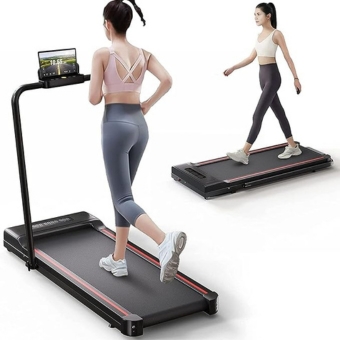Table of Contents
1. Introduction
Importance of heart rate monitoring
Monitoring your heart rate does more than track calories burned; it’s a window into understanding your cardiovascular health and overall fitness level. The immediate data provided by a heart rate monitor can signal if you’re training within your optimal zones, helping you avoid both undertraining and overtraining. Additionally, consistent tracking allows for personalized adjustments to your workout regimen based on how your body is responding in real time.
Beyond workouts, monitoring heart rate variability (HRV) can offer key insights into stress levels and recovery effectiveness. Studies have shown that athletes who actively manage HRV enjoy better performance outcomes thanks to optimized rest periods and training loads. Integrating these insights with the convenience of smartphone sync capabilities means you no longer need bulky equipment or manual logs. Your phone becomes an insightful health hub providing nuanced, actionable feedback on both daily activities and structured training sessions.
Benefits of syncing with smartphones/apps
Syncing your heart rate monitor with a smartphone app unlocks an array of benefits that elevate your fitness regime. Real-time data tracking ensures you’re always aware of how hard your body is working, allowing for adjustments in intensity to optimize performance and prevent overexertion. This immediate feedback can be incredibly motivating, transforming each workout into a more effective and engaging experience.
Beyond mere numbers, these apps integrate seamlessly with other health metrics like sleep patterns, calorie intake, and even mental well-being indicators. Such holistic insights enable you to understand the bigger picture of your health journey. Whether you’re training for a marathon or simply striving to improve overall wellness, the easy access to personalized analytics empowers informed decisions and sustained progress towards fitness goals.
2. Choosing the Right Heart Rate Monitor
Types of monitors available
In the diverse world of fitness technology, heart rate monitors come in various forms, each catering to different lifestyles and preferences. The most common type, chest strap monitors, are renowned for their accuracy. They sit snugly around your chest and use electrodes to pick up electrical signals from your heartbeat. While some might find them slightly less comfortable than other types, their reliability is unparalleled, making them a favorite among serious athletes and dedicated fitness enthusiasts.
Wrist-based heart rate monitors have surged in popularity due to their convenience and comfort. These devices often double as smartwatches or fitness trackers, seamlessly integrating with your smartphone or fitness app via Bluetooth or ANT+. While they may not always match the precision of chest straps during high-intensity intervals, the ease of wearing them all day—and tracking continuous heart rate—provides invaluable data for everyday health monitoring. For those looking for minimalistic solutions without compromising on basic functionality, optical sensors embedded in earbuds or armbands offer yet another innovative option that aligns well with diverse workouts ranging from running to yoga sessions.
Compatibility with devices and apps
Ensuring compatibility between your heart rate monitor and various devices or apps is crucial for seamless integration and optimal performance. Most modern heart rate monitors utilize Bluetooth or ANT+ technology, which allows them to pair with a wide range of smartphones, tablets, and even some smartwatches. However, it’s essential to check that the specific model of your heart rate monitor corresponds with the version of Bluetooth or other protocols supported by your devices to avoid connectivity issues.
Moreover, different fitness apps can have varying levels of support for heart rate data. Leading platforms like Strava, MyFitnessPal, and Apple Health have comprehensive compatibility features that facilitate easy syncing with popular brands of heart rate monitors. Yet, niche or lesser-known apps may require manual input or might not fully exploit advanced functionalities such as continuous monitoring or workout-specific metrics. To maximize your fitness regimen’s efficacy, select an app known for robust integration capabilities tailored to harness all the insights your heart rate monitor has to offer.
3. Preparing Your Smartphone or Fitness App
Ensure Bluetooth is enabled
To ensure a smooth syncing experience with your heart rate monitor, start by confirming that Bluetooth is enabled on your smartphone. While this might seem like a basic step, it’s often overlooked and can lead to frustration. Bluetooth technology has been designed to facilitate seamless connections, allowing your fitness app to receive real-time data from your heart rate monitor effortlessly.
Moreover, make sure your device is discoverable. Sometimes, merely enabling Bluetooth isn’t enough; you need to actively set it in pairing mode if it’s not showing up. Taking these precautions not only simplifies the initial sync but also lays the groundwork for automatic future connections. Avoiding these common pitfalls ensures that you’ll spend more time focusing on your fitness goals and less time troubleshooting technical issues.
Download necessary fitness app
Once you’ve determined the perfect heart rate monitor for your needs, the next pivotal step is downloading a compatible fitness app. These apps not only sync with your monitor but also offer a treasure trove of features to enhance your workouts. Picture customized training plans that cater precisely to your fitness goals, or real-time feedback that adjusts to every heartbeat—this level of personalization was once the domain of elite athletes but is now accessible at your fingertips.
Imagine unlocking advanced metrics like VO2 max, stress levels, and even recovery times. Fitness apps today are far removed from basic step-counters; they’re smart and sophisticated tools designed to turn raw data into actionable insights. Feeling overwhelmed by choice? Opt for an app that’s compatible with multiple brands of heart rate monitors, as these typically have robust user communities and frequent updates ensuring peak performance and new features regularly added. Embrace this tech revolution in fitness—the right app can elevate not just your workouts but your entire approach to health and wellness.
4. Pairing the Devices Together
Step-by-step pairing guide
Begin by ensuring that both your smartphone and heart rate monitor are fully charged. This may seem basic, but uninterrupted connectivity is crucial for accurate tracking during your workout. Next, activate Bluetooth on both devices; many modern heart rate monitors automatically enter pairing mode when turned on, but some might require you to press and hold a button until a light flashes.
Open your fitness app and navigate to the device settings or connections section. Apps like Strava, MyFitnessPal, and Garmin have specific prompts for adding new devices. Select ‘Add Device’ or its equivalent option within the app, and it should display a list of available devices ready to pair. Choose your heart rate monitor from this list to initiate the connection process.
Once paired, calibrate your monitor by following in-app instructions—usually involving brief activities to ensure accuracy. Remember, manually inputting any necessary calibration information like age and weight can significantly enhance data precision. Soon enough, you’ll be able to see real-time heart rate updates reflecting seamlessly through your fitness app’s interface during workouts!
Troubleshooting common connection issues
Even the most advanced heart rate monitors can face connectivity hiccups, but diagnosing these issues doesn’t have to be daunting. Often, the culprit lies in overlooked basics like Bluetooth settings—make sure both your smartphone and monitor are set to discoverable mode. Another frequent obstacle is software compatibility; always ensure your fitness app is up-to-date as developers constantly release patches that could fix hidden bugs affecting sync efficacy.
Sometimes, interference from other devices can disrupt a stable connection. Minimizing the number of active Bluetooth gadgets around you might enhance signal strength and reliability. Additionally, resetting your network settings or un-pairing and then re-pairing your devices can perform small miracles, effectively clearing out any lingering glitches. These straightforward steps empower you to swiftly resolve connectivity issues without missing a beat in your training regimen.
5. Verifying Connection and Data Syncing
Confirm successful device pairing
After initiating the pairing process, confirming successful device pairing is an essential yet often overlooked step that ensures your heart rate monitor and smartphone or fitness app work seamlessly together. One reliable method to verify this connection is by navigating to the settings within your fitness app. Here, most apps have a dedicated section for connected devices where you can see if your heart rate monitor appears listed and active. If not, sometimes toggling the Bluetooth setting off and on can help refresh the connection.
Take advantage of real-time feedback features incorporated in many modern fitness apps. Look for immediate data changes—like your current heart rate—that update as you wear the monitor. This instantaneous stream of information not only affirms successful pairing but also provides an early glimpse into how your new gadget will enhance your training regimen. For those who rely on tactile assurance, feel free to gently tap or press any operational buttons available on either device; many offer haptic feedback or visual signals like blinking LEDs that further confirm a stable link has been established.
Check real-time data on app
Once your heart rate monitor is synced with your smartphone or fitness app, the magic truly begins. One of the standout features is the ability to check real-time data right at your fingertips. Imagine being in the middle of a high-intensity interval training (HIIT) session and glancing at your phone to see that you’ve hit your target heart rate zone. This instantaneous feedback allows you to adjust your workout on-the-fly, making each session as effective as possible.
Moreover, these real-time insights can be a game-changer for endurance athletes who need to maintain specific heart rates over long periods. By monitoring live metrics through the app, they can avoid both undertraining and overtraining, optimizing performance while minimizing injury risks. With this level of control and awareness, you’re not just exercising but smart-training—refining every move based on accurate biometric information streaming seamlessly from your device.
6. Tips for Optimal Performance
Maintaining battery life and connectivity
To ensure that your heart rate monitor stays connected and functional, maintaining battery life is paramount. Start by always charging your device according to the manufacturer’s guidelines—overcharging or using incompatible chargers can drastically reduce battery lifespan. For devices with replaceable batteries, invest in high-quality replacements; cheap alternatives might save you money upfront but could compromise performance and longevity.
Beyond the basics of power management, optimizing connectivity is crucial as well. Regularly updating both your heart rate monitor’s firmware and your smartphone or fitness app ensures compatibility and smooth data transfer. Environmental factors also play a significant role—keep electronic devices away from sources of interference such as microwaves or strong magnetic fields to prevent signal disruptions. By safeguarding both battery health and connectivity, you’re setting the stage for seamless syncs and more accurate fitness tracking.
Regularly updating firmware/software
Firmware updates for your heart rate monitor are as crucial as syncing it with your smartphone or fitness app. Regularly updating the firmware ensures that your device is operating at its optimal performance, often introducing enhancements that boost accuracy and add new features. Over time, manufacturers identify and fix bugs or glitches which might affect data synchronization without you even realizing it.
Moreover, updated firmware is vital for ensuring compatibility with the latest versions of apps and smartphone operating systems. As technology evolves, older firmware versions may struggle to keep up, leading to connectivity issues or inaccurate readings. Thus, these updates not only offer improved functionality but also prolong the lifespan of your device by adapting it to newer technological standards. Without them, you miss out on potential performance boosts that could make a significant difference in tracking your health metrics accurately.
7. Conclusion: Recap benefits of syncing devices
In conclusion, syncing your heart rate monitor with your smartphone or fitness app unlocks a wealth of benefits that enhance both convenience and performance. One key advantage is the real-time data visibility, providing immediate feedback on your heart rate during workouts so you can optimize exercise intensity for better results. This level of insight allows for smarter decision-making, ensuring you stay within optimal heart rate zones whether you’re aiming for fat loss, endurance building, or peak performance.
Another critical benefit lies in long-term health tracking and progression analysis. With synchronized devices, your historical data are stored and easily accessible via user-friendly apps; this enables a comprehensive view of trends over time, aiding in the identification of patterns that might otherwise go unnoticed. Furthermore, synchronization facilitates seamless integration with other fitness and health metrics such as sleep quality, steps taken, and caloric intake—offering a holistic overview of your wellness journey. Ultimately, syncing isn’t just about wirelessly connecting gadgets; it’s about creating an interconnected ecosystem that supports more informed choices and healthier living.
















ugclti